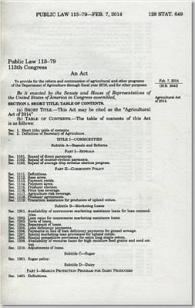Full Description
This engaging volume on English as an Additional Language (EAL), argues persuasively for the importance of critical participatory pedagogies that embrace multilingualism and multimodality in the field of TESOL. It highlights the role of the TESOL profession in teaching for social justice and advocacy and explores how critical participatory pedagogies translate into English language teaching and teacher education around the world. Bringing together diverse scholars in the field and practicing English language teachers, editors Polina Vinogradova and Joan Kang Shin present 10 thematically organized units that demonstrate that language teaching pedagogy must be embedded in the larger sociocultural contexts of teaching and learning to be successful. Each unit covers one pedagogical approach and includes three case studies to illustrate how English language teachers across the world implement these approaches in their classrooms. The chapters are supplemented by discussion questions and a range of practical sources for further exploration. Addressing established and emerging areas of TESOL, topics covered include: Critical and postmethod pedagogiesTranslingualism Digital literacy and multiliteracies Culturally responsive pedagogyAdvocacy Featuring educators implementing innovative approaches in primary, secondary, and tertiary contexts across borders, Contemporary Foundations for Teaching English as an Additional Language is an ideal text for methods and foundational courses in TESOL and will appeal to in-service and preservice English language teachers as well as students and teacher educators in TESOL and applied linguistics.
Contents
ForewordJoAnn (Jodi) CrandallPreface: Polina Vinogradova and Joan Kang ShinAcknowledgements UNIT 1: Introduction Chapter 1: Introduction: Teaching English as an Additional Language in the 21st CenturyJoan Kang Shin UNIT 2: Critical Pedagogies and TESOLChapter 2: Disrupting Method: Critical Pedagogies and TESOLBenjamin "Benji" Chang and Spencer SalasCase Study 2.1: Awakening Critical Consciousness in Japanese University EFL Students through Student JournalismDavid William LeslieCase Study 2.2: Implementing Critical Pedagogy in a Standards-Driven Context in Turkey: Making Room for Teacher and Student VoicesHale Hatice KizilcikCase Study 2.3: Critical Pedagogy in a Postgraduate TESOL Professional Development Course in Mexico: Using the NACTIC ModelLeticia Araceli Salas Serrano, Rebeca Elena Tapia Carlin, and Celso Perez CarranzaUNIT 3: Postmethod Pedagogy in ELTChapter 3: Postmethod Pedagogy and its Role in Contemporary English Language TeachingDoaa RashedCase Study 3.1: Course Planning in the Postmethod Era: Ideas from a Practicum Experience in Thailand Lucas John Edmond Case Study 3.2: Enacting Postmethod Pedagogies in IELTE Programs in Argentina: Do as I say, or as I do?Maria Alejandra Soto Case Study 3.3: Towards a Context-sensitive Theory of Practice in Primary English Language Teaching through Theme-based Instruction in SerbiaVera Savic UNIT 4: Culturally Responsive Pedagogy in ELTChapter 4: Culturally Responsive Pedagogy in TESOLM'Balia Thomas and Marta Carvajal-RegidorCase Study 4.1: Why are there so Many Immigrants Here?: Problem-posing with Middle Schoolers in Hawai'iGordon Blaine West Case Study 4.2: Teaching EFL through Social Justice Themes in China: Developing a Critical ConsciousnessHetal Patel Case Study 4.3: Applying Culturally Responsive Pedagogy to Engage with Cultural Differences in an ESL Composition Course in the USZhenjie Weng, Mark McGuire, and Tamara Mae Roose UNIT 5: Translingualism in TESOLChapter 5: Translingualism in the Teaching of English: Theoretical Consideration and Pedagogical ImplicationsEunjeong LeeCase Study 5.1: Leveraging Translanguaging in Role-Plays in a U.S. University Katja Davidoff and Zhongfeng Tian Case Study 5.2: Translingual Practices in an Adult ESL Literacy Class in the U.S.Sarah Young Knowles Case Study 5.3: Koryoin ( / ) Children's Translingual Practices for Learning English: A Case Study of Russian-Korean Children in South KoreaYoungjoo Yi and Jinsil Jang UNIT 6: Multiliteracies in TESOLChapter 6: A Pedagogy of Multiliteracies and its Role in English Language EducationShakina RajendramCase Study 6.1: Using Art to Spark Conversation and Critical Consciousness With Recently Arrived Immigrant English Language Learners in the U.S.Brian Tauzel Case Study 6.2: Exploring Places and Spaces of Migration and Immigration Using Google Earth: A Multiliteracies Approach for English Learners in the USNatalia A. Ward and Amber N. Warren Case Study 6.3: Rappin' on Campus: Multiliteracies in Action in Japan David Dalsky and Jueyun SuUNIT 7: Collaborative Technologies and TESOLChapter 7: Teaching with Collaborative Technologies Across BordersIlka KostkaCase Study 7.1: Developing Skills for Independent L2 Writers in Hawai'i: Democratic Participation to Classroom AssessmentMitsuko Suzuki Case Study 7.2: Borderless Learning Using Online Writing and Video Conferencing: A Case of Agriculture Students in Indonesia Mushoffan Prasetianto Case Study 7.3: Implementing Flipped Classrooms in Uzbek and Karakalpak EFL Teacher EducationGena Bennett, Aybolgan Borasheva, and Dilnoza Ruzmatova UNIT 8: Digital Literacy and TESOLChapter 8: English Language Education and Digital Literacy in the 21st CenturyRichmond DzekoeCase Study 8.1: Affordances of Mobile Devices in Teaching English as a Foreign Language in Brazilian Public SchoolsCristiane Vicentini, Ines Cortes da Silva, and Luciana C. de OliveiraCase Study 8.2: A Lesson in Hedging with Online Corpus Data in an Academic Research and Writing Course in the U.S.Erik VossCase Study 8.3: The Effect of Mobile Learning on Learner Autonomy in the United Arab EmiratesHussam AlzieniUNIT 9: Advocacy and TESOLChapter 9: Advocacy for Student and Teacher EmpowermentHeather A. LinvilleCase Study 9.1: Educators Influencing Policy: The Language Opportunity Coalition and the Seal of Biliteracy in the U.S.Rachel Thorson Hernandez and Nicholas Close SubtireluCase Study 9.2: Caring as a Form of Advocacy for Literacy-Emergent Newcomers with Special Education Needs: The Community-Building Pedagogical Approach in the U.S.Luis Javier Penton HerreraCase Study 9.3: Building Communities of Practice: Advocacy for English Teachers in RwandaRichard Niyibigira and Jean Claude Kwitonda UNIT 10: TESOL Teacher EducationChapter 10: Preparing English Language Teachers for Participatory TeachingPolina Vinogradova Case Study 10.1: Reflective Teaching and Critical Language Pedagogy in a Thai EFL ContextMaria Diez-Ortega and Hayley CannizzoCase Study 10.2: From Teachers to Young Learners: Integrating Personal Development Instruction into Foreign Language Teaching in SerbiaDanijela Prosic-SantovacCase Study 10.3: Preparing Teachers to Create LGBTQ+ Inclusive Classrooms in the U.S.Joshua M. Paiz Index








